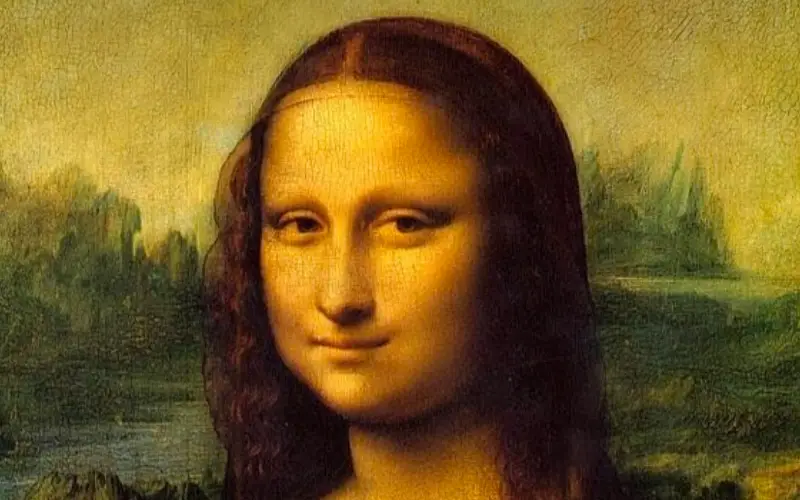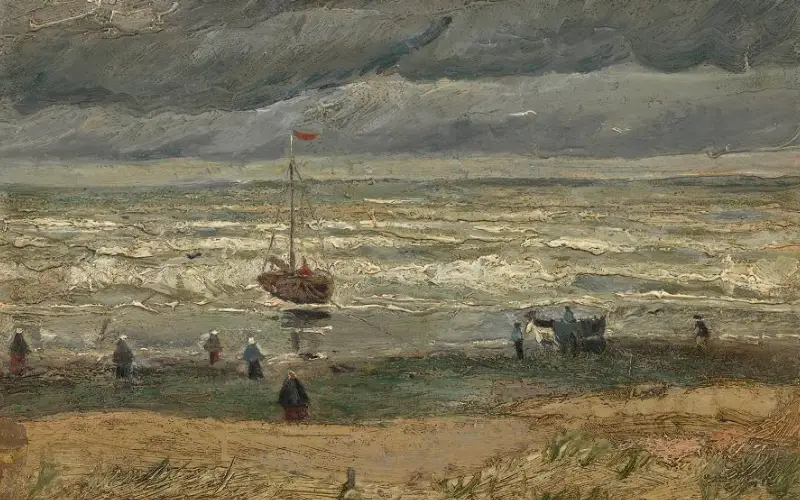
Art heists have always captured the imagination of both the general public and Hollywood. From daring heists in museums to cunning burglaries in private collections, these real-life tales of stolen masterpieces are as intriguing as any fictional crime thriller. In this blog article, we will delve into some of the most notorious art thefts in history, exploring the audacity of the thieves, the cultural significance of the stolen artworks, and the ongoing quest to recover these precious treasures.
The List of the 4 Greatest Art Theft Heists in History
1. The Isabella Stewart Gardner Museum Heist

The Isabella Stewart Gardner Museum heist remains one of the most daring and perplexing art thefts in history. Situated in Boston’s Fenway-Kenmore neighborhood, the museum, named after its founder and art enthusiast Isabella Stewart Gardner, houses a vast and eclectic collection of artworks from different eras and regions.
On that fateful night of March 18, 1990, the two men, disguised as police officers, brazenly deceived the museum’s security personnel. They claimed to be responding to a reported disturbance, which unsuspecting guards allowed them to investigate. Once inside, the thieves quickly revealed their true intentions. They handcuffed the guards and proceeded to execute a meticulously planned heist that would forever leave a void in the museum’s collection.
The stolen works of art included masterpieces by some of the most renowned artists in history. Johannes Vermeer’s “The Concert,” one of only 36 known paintings by the Dutch master, was among the pilfered treasures. Alongside Vermeer’s work, the thieves took Rembrandt’s “The Storm on the Sea of Galilee,” his only known seascape, and “A Lady and Gentleman in Black,” an exquisite painting by Édouard Manet. In total, 13 pieces were snatched, representing an estimated value of $500 million, making it the largest art theft in history at the time.
The Isabella Stewart Gardner Museum Heist Aftermath
The audacity and precision of the crime left the art world stunned. As news of the heist spread, a massive global search for the stolen masterpieces commenced. Law enforcement agencies, private investigators, and art recovery organizations collaborated tirelessly to retrieve the stolen works, but to this day, they have not been successful. The empty frames of the stolen paintings still hang in the museum, serving as haunting reminders of the robbery that shook the art community to its core.
In the aftermath of the heist, numerous theories and speculations arose about the identity of the thieves and the whereabouts of the stolen artwork. Some suspected the involvement of organized crime, while others speculated that the works were hidden away in secret collections or even destroyed to eliminate any evidence of the theft. However, despite countless leads, the case remains open and the mystery endures.
Over the years, the Gardner Museum has continued its relentless efforts to recover the stolen art. In an attempt to encourage leads and provide potential information, a reward of $10 million is offered for anyone who can provide credible information leading to the recovery of the stolen masterpieces.
Despite the lack of tangible results, the Isabella Stewart Gardner Museum heist has left a profound impact on the world of art security. Museums worldwide have bolstered their security measures, implementing advanced surveillance systems, motion detectors, and other sophisticated technologies to protect their invaluable collections.
The Isabella Stewart Gardner Museum heist serves as a constant reminder of the vulnerability of cultural treasures and the importance of preserving and protecting art for the enrichment of future generations. As long as the stolen works remain unaccounted for, the art world will continue to hold its breath, hoping that one day these masterpieces will resurface, bringing closure to one of the most captivating art theft mysteries in history.
Read More Fun Facts
Learn more fun facts with Trivia Mastermind content.
2. The Mona Lisa Heist

The Mona Lisa heist is an unforgettable tale of audacity and intrigue that forever changed the way art is protected and admired in museums worldwide. The enigmatic smile of Leonardo da Vinci’s masterpiece, displayed in the hallowed halls of the Louvre in Paris, vanished without a trace, leaving the art world and the general public in a state of shock and disbelief.
The date was August 21, 1911, when the Mona Lisa, with its hauntingly serene visage, disappeared from its spot on the walls of the Louvre. News of the theft spread like wildfire, captivating the imagination of people far beyond the boundaries of the art world. The daring heist turned the painting into a global sensation, garnering extensive media coverage and sparking a frenzy of speculation and theories about the motive behind the audacious act.
The Mona Lisa Heist Aftermath
The absence of the Mona Lisa left a gaping hole in the Louvre’s collection, and its once-prominent spot on the museum’s walls seemed empty and incomplete. Museum visitors expressed their dismay and disbelief, mourning the loss of the treasured masterpiece. The painting’s absence highlighted the vulnerability of even the most renowned art institutions, leading to widespread debates on the necessity of improving security measures to protect invaluable cultural heritage.
For two long years, the Mona Lisa remained missing, and law enforcement agencies tirelessly pursued leads and suspects, attempting to unravel the mystery. Numerous theories circulated about the painting’s whereabouts, with some speculating that it had been stolen for ransom or that it was part of an elaborate plot to embarrass the French government.
Finally, on December 12, 1913, the elusive thief was apprehended. Vincenzo Peruggia, an Italian handyman who had once worked at the Louvre, was caught attempting to sell the artwork in Florence, Italy. Peruggia, claiming that he sought to return the painting to its native Italy, believed that it had been wrongfully taken by France.
The recovery of the Mona Lisa marked the end of a captivating saga, but it also turned the painting into a global sensation, elevating its status from a celebrated masterpiece to an iconic symbol of art theft lore. The theft and subsequent recovery catapulted the Mona Lisa to unprecedented fame and solidified its position as one of the most recognized and admired works of art in history.
In the wake of the heist, the Mona Lisa was treated with even greater reverence and protection, surrounded by elaborate security measures and bulletproof glass to ensure its safety. The incident also sparked an awareness of the importance of safeguarding cultural heritage, leading museums worldwide to reassess and reinforce their security protocols to prevent such brazen thefts from occurring again.
Today, the Mona Lisa remains a focal point of the Louvre, drawing millions of visitors each year who come from all corners of the globe to catch a glimpse of her enigmatic smile. The audacious heist of the Mona Lisa continues to be an enduring chapter in the annals of art history, a captivating tale of mystery and intrigue that serves as a cautionary reminder of the timeless value of art and the need to protect it for the enjoyment and education of future generations.
Play Trivia!
Challenge yourself and play trivia questions with answers and explanations.
3. The Van Gogh Museum Heist

The Van Gogh Museum heist is a tale of brazen criminality that sent shockwaves through the art world and the city of Amsterdam. In the early hours of December 7, 2002, two audacious thieves executed a meticulously planned robbery at one of the most esteemed art institutions in the world – the Van Gogh Museum.
Armed with sledgehammers, the thieves smashed through the museum’s thick protective glass windows, shattering the tranquility of the silent halls that housed a priceless collection of Vincent van Gogh’s masterpieces. Their swift and calculated actions left security personnel stunned and unable to respond in time to prevent the criminals from escaping with two valuable paintings.
The stolen works were of immense cultural and historical significance. The first painting, “View of the Sea at Scheveningen,” was one of Van Gogh’s early works, depicting the windswept Dutch coastline. The second, “Congregation Leaving the Reformed Church in Nuenen,” held immense sentimental value as it was a representation of Van Gogh’s father’s church and a poignant tribute to his family’s life in Nuenen.
The Van Gogh Museum Heist Aftermath
The theft was a devastating blow to the museum and the art community at large. The loss of these two priceless artworks left a void in the collection and a sense of violation in the hearts of art enthusiasts worldwide. The incident also raised serious concerns about the vulnerability of even the most prestigious art institutions and the need for bolstered security measures.
For more than a decade, the stolen paintings remained elusive. The art world anxiously awaited any sign of their whereabouts, while law enforcement agencies pursued leads and followed trails that led them across borders and through a labyrinth of underworld connections.
In an unexpected turn of events, in September 2016, Italian law enforcement announced a breakthrough. The two stolen Van Gogh paintings were discovered during a raid at a mafia hideout in Castellammare di Stabia, near Naples, Italy. Alongside the Van Gogh works, law enforcement found numerous other stolen artworks, revealing the criminals’ involvement in a vast network of art theft and illicit trading.
The recovery of the paintings was a momentous occasion, and the artworks were returned to the Van Gogh Museum with great ceremony and relief. Their return marked the end of a long and arduous journey for the museum staff and the art community, who had yearned for the recovery of these priceless treasures.
The Van Gogh Museum heist shed light on the complex and lucrative world of art theft, where stolen works can be shuffled across borders and disappear into the hands of unscrupulous collectors or criminal organizations. The incident also emphasized the need for greater cooperation among law enforcement agencies, museums, and art recovery organizations in combating art theft and illicit trade.
Since the heist, the Van Gogh Museum has implemented enhanced security measures, including improved surveillance technology and reinforced protective barriers. Additionally, the incident has spurred other museums worldwide to reevaluate and strengthen their own security protocols to safeguard their invaluable collections from potential theft.
The recovery of the stolen Van Gogh paintings stands as a testament to the perseverance and dedication of those committed to preserving cultural heritage. The incident served as a stark reminder that art institutions, regardless of their prestige, must remain vigilant in safeguarding their collections and the legacy of the artists they cherish. The Van Gogh Museum heist will forever remain a cautionary tale, reminding us that even the most revered works of art are not immune to the lure of criminal intent.
4. The Scream Heist

“The Scream,” one of the most iconic and haunting images in the art world, has not only captivated art enthusiasts with its emotional intensity but also drawn the attention of audacious thieves. The painting’s vulnerability to theft was exposed not once, but twice, in two daring heists that left the art community in shock and prompted a reevaluation of security measures to protect invaluable cultural treasures.
The first heist occurred on February 12, 1994, at the National Gallery in Oslo, Norway. The thieves entered the museum under the cover of darkness and made off with the first version of “The Scream,” along with Munch’s “Madonna.” The theft caused an uproar in Norway and beyond, as the stolen paintings represented an integral part of the nation’s cultural heritage. Authorities and art recovery organizations launched an intensive search for the missing artworks, and the entire world watched with bated breath.
Fortunately, the stolen masterpieces were recovered several months later, in May 1994, during a dramatic sting operation. The thieves, realizing the difficulty of selling such well-known artworks on the black market, attempted to negotiate a ransom with the Norwegian government. With the assistance of undercover agents, the authorities successfully apprehended the criminals and returned the paintings to their rightful place in the National Gallery.
However, “The Scream” would suffer another theft just a decade later. On August 22, 2004, the Munch Museum in Oslo experienced another audacious heist, during which masked gunmen stole “The Scream” and another version of the painting, along with “Madonna” once again. This second theft left the nation in disbelief and raised serious questions about the adequacy of museum security.
In contrast to the previous theft, the second heist was a swift and daring operation. The thieves brazenly displayed their weapons, immobilized museum staff and visitors, and made a quick escape with the stolen masterpieces. The audacity of the crime highlighted the vulnerability of even renowned art institutions, demonstrating that no amount of fame or reputation could deter determined criminals from targeting priceless cultural artifacts.
Despite the audacity of the thieves, the second version of “The Scream” was recovered in less than two years, in August 2006. The painting was discovered in a sting operation involving Norwegian and British authorities, who posed as potential buyers for the artwork. Once again, the world breathed a sigh of relief as “The Scream” returned to the Munch Museum.
The Scream Heist Aftermath
The incidents involving “The Scream” underscored the critical need for enhanced security measures in museums and cultural institutions. In response to the thefts, the Norwegian authorities implemented stricter security protocols, including advanced surveillance systems, improved alarms, and reinforced display cases. Additionally, museums worldwide took note of the vulnerabilities exposed by these thefts and reassessed their own security measures to protect their invaluable collections.
“The Scream” heists are a testament to the enduring allure and universal appeal of art, which can captivate both art lovers and criminals alike. While the stolen versions of “The Scream” have found their way back to public display, these incidents serve as a reminder that protecting cultural heritage is an ongoing endeavor, requiring continuous efforts to stay one step ahead of potential threats. With each successful recovery, the legacy of Edvard Munch’s masterpiece grows stronger, reaffirming the indomitable spirit of art and its power to transcend time, place, and even the clutches of audacious thieves.
The Ongoing Quest for Recovery
Despite efforts by law enforcement agencies and art recovery organizations, many stolen artworks remain elusive to this day. The black market for stolen art is vast and complex, making it challenging to trace and recover missing masterpieces. While some artworks resurface years or even decades later, others remain lost in the shadows, fueling countless theories and speculations about their whereabouts.
Conclusion
Famous art heists are not merely cinematic plot lines; they represent real challenges that the art world faces in safeguarding cultural heritage. Each stolen artwork carries with it a piece of history and a story that deserves to be preserved for future generations. The hunt for these missing masterpieces continues, with the hope that one day, they will be returned to their rightful places, enriching the world with their beauty and significance once again.
In the meantime, these art theft mysteries will continue to capture our imagination, reminding us of the invaluable role that art plays in our society and the importance of preserving and protecting our cultural heritage.
Read More Fun Facts
Learn more fun facts with Trivia Mastermind content.
Play Trivia!
Challenge yourself and play trivia questions with answers and explanations.
Recent Posts
Science Trivia - Astronomy ...
Step into a realm of nostalgia as we embark on a journey through the annals of pop culture and bid farewell to 35 recently obsolete technologies. In the ever-evolving landscape of innovation, certain...


